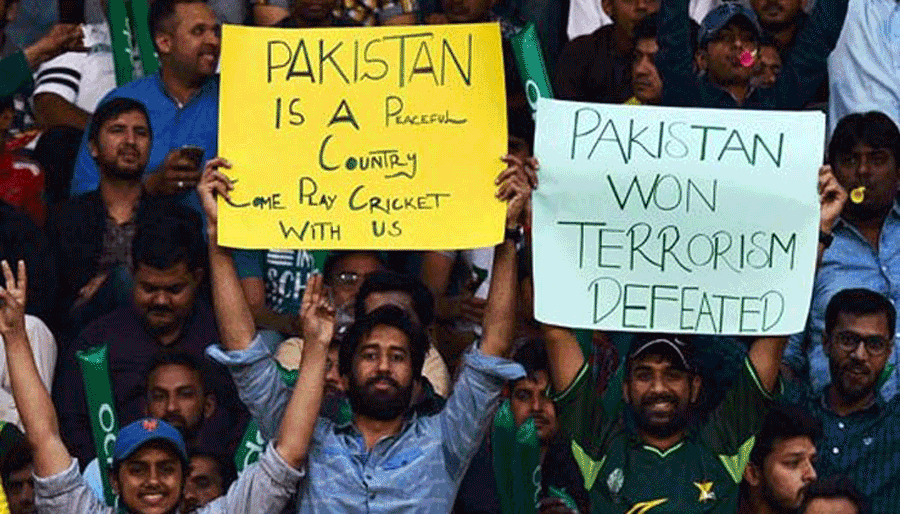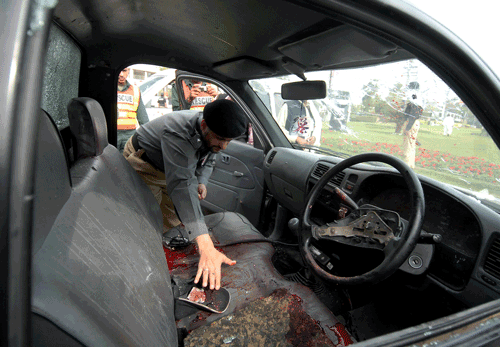The Pariahs of Cricket
By Sami Subhani | Sports | Published 6 years ago
Of the myriad terrorist attacks to befall Pakistan since the turn of the millennium, few have been as decisive in their socio-cultural impact as the March 2009 attack on the Sri Lankan Cricket Team in Lahore. This ghastly episode left six Pakistani police officers and two civilians dead, while injuring six Sri Lankan players, two staff members and a reserve umpire. Yet in order to fully assess the damage inflicted by this incident one must look beyond the scene of the immediate carnage. As news of the attack spread globally, Pakistan’s reputation as a worthy destination for international sporting events fell into disrepair.
Within a month, Pakistan was stripped of co-host status for the 2011 Cricket World Cup; no international cricket team was willing to tour Pakistan for the next six years over safety concerns. In the meantime, the Pakistan Cricket Team played its home games in the United Arab Emirates (UAE), with stadiums in Dubai, Sharjah and Abu Dhabi serving as a kind of foster home for Pakistani Cricket. With the loss of cricket on home ground, Pakistanis weren’t simply deprived of a popular pastime but a rare point of national pride and unity. Victories on the pitch brought a sense of achievement to a people often left wanting by their institutions and feeling overlooked by the rest of the world.

Pakistani fans plead for the return of international cricket as the spectre of terrorism recedes.
While Pakistan’s security situation has certainly improved in the decade since the 2009 attack, the return of top-flight cricket has remained a distant dream. On only six occasions since 2015 have foreign players agreed to play in Pakistan, and only half of these visits involved more than one game, while none involved Test cricket.
In the most recent international tour in April of last year, the West Indies agreed to play three consecutive T20s in Karachi – the first top-flight cricket to be played in this city since 2009. However, four of the most recognisable and experienced West Indian players decided to sit out the tour, citing safety concerns, despite the West Indies Cricket Board assuring their players that the security on offer in Karachi was to their satisfaction. The absentees included Chris Gayle, with his considerable star power, and T20 team captain, Carlos Brathwaite.

A dark day: Terrorist attack on Sri Lankan team in Lahore in 2009 was an attack on Pakistani cricket.
The upcoming home series against Sri Lanka has been blighted by similar setbacks. Slated to take place from September 27 to October 9, the series will consist of 3 ODIs and 3 T20s, making it the longest international series to take place in Pakistan in a decade since the attack. The Pakistan Cricket Board’s (PCB) plan is to use this tour as an exhibition, one that will hopefully prove that Pakistan is safe enough to host the teams’ Test Championship matches in December 2019.
The tour ran into trouble from the get-go with 10 Sri Lankan players refusing to undertake the journey to Pakistan. Once again safety was the reason, with individual players deciding to ignore their own cricket board’s confidence in the security arrangements. Parallel to the West Indies tour last year, the 10 refusing to travel are among the most prominent names associated with the Sri Lankan team, including Dimuth Karunaratne and Lasith Malinga, the ODI and T20 captains respectively.
To compound the sour mood created by these humiliating withdrawals, less than two weeks from the starting date the entire tour was close to being scrapped as the Sri Lankan government received information about a possible terrorist threat on the Sri Lankan team. Only after the Pakistan government confirmed the provision of visiting head of state level security for the visiting Sri Lankan team, did they formally re-commit to the tour.
 What remains of the touring Sri Lankans will be considerably depleted and inexperienced, diluting the quality of cricket on offer for the Pakistani home support. Even if the tour itself concludes without further controversy, the PCB’s hopes for a return of Test Cricket to Pakistan in the winter may still be stymied. The 10 players refusing to play in Pakistan now, may well refuse to do so come the Test Championship games in December. Though Sri Lanka Cricket (SLC) is content to send a weakened side to Pakistan for now, it may not be so agreeable with Championship points on the line. In which case top-flight Pakistani cricket, once again, risks being relocated to the UAE.
What remains of the touring Sri Lankans will be considerably depleted and inexperienced, diluting the quality of cricket on offer for the Pakistani home support. Even if the tour itself concludes without further controversy, the PCB’s hopes for a return of Test Cricket to Pakistan in the winter may still be stymied. The 10 players refusing to play in Pakistan now, may well refuse to do so come the Test Championship games in December. Though Sri Lanka Cricket (SLC) is content to send a weakened side to Pakistan for now, it may not be so agreeable with Championship points on the line. In which case top-flight Pakistani cricket, once again, risks being relocated to the UAE.
Thus, it seems that our long-awaited reinstatement as a full-fledged and respected member of the international cricketing community has for now been postponed. The game that once provided ordinary Pakistanis with an avenue to rise above their country’s deficiencies has now become a constant reminder of how low our global reputation has sunk, and how truly isolated we are.
However, it would be erroneous to assume that the segregation of Pakistani cricket is a problem for Pakistan alone. Of the dozen nations that are full members of the International Cricket Council, international cricket’s governing body, only in the South Asian region does one find member states where cricket is the most popular sport, by far. Though Pakistan lacks the financial muscle of the Indian market; given the size and dedication of its fanbase, Pakistan is a crucial component in the long-term viability of cricket as a major global sport. The fact that Pakistan has a young and growing population only underscores this point. With cricket’s longer formats, ODIs and Tests, experiencing a decline in popularity and the rising popularity of rival sports in a traditional stronghold like India, the Pakistani fanbase is an asset the cricketing world cannot afford to surrender.
It is fair to say that Pakistani authorities, both within and beyond cricket, need to do more to repair the damage done to the country’s popular image by our long and turbulent struggle against terrorism. While the violence in our streets has so far been tempered, the scars it inflicted on Pakistan’s reputation evidently linger. In order to resurrect our image in the global consciousness, Pakistan must come to be not just a place that is safe to visit, but one that people should desire to visit. And as Pakistan works to remove the stain left by past tragedies, the global cricketing community should come to realise the tremendous benefits a fully engaged Pakistan has to offer to the sport and remain receptive to its efforts to once again become a regular host for top-flight cricket.


